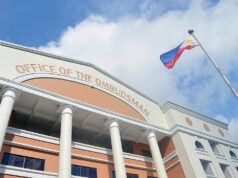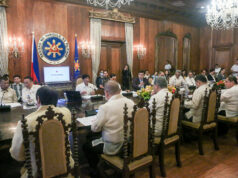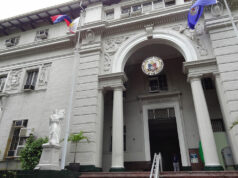Gov’t to ease foreign cap in construction
THE GOVERNMENT is looking to allow foreign contractors to take on public construction projects under a more liberal Foreign Investment Negative List (FINL) in order to support a planned infrastructure boom, a state economic manager said yesterday.
Socioeconomic Planning Secretary Ernesto M. Pernia said the upcoming version of the FINL could fully open public infrastructure projects to foreign construction firms, versus the 40% cap they now observe which he described as “still very restrictive.”
“Well, ‘yung [restriction on] international contractors, we are taking that out,” Mr. Pernia told reporters on the sidelines of the 2nd Annual Philippines Energy & Infrastructure Finance Forum held at the Fairmont Makati.
The FINL identifies industries and economic activities where foreign investments are limited or are prohibited. Business groups have repeatedly pressed the government to ease limits on foreign investments so that they can participate more in infrastructure projects.
The 10th FINL currently in place was issued on May 29, 2015 under then-president Benigno S.C. Aquino III. The list is reviewed every other year.
Foreigners can now hold up to a 40% stake in public utilities; companies that supply materials and goods to state-run firms, government agencies and municipal corporations; and those that operate infrastructure or development facilities which need a public utility franchise, among others.
Foreign firms currently team up with Filipino-owned companies through joint ventures in order to take on infrastructure projects.
“We are in the process of liberalizing the foreign investment negative list. We are trying to be more comparable now to our ASEAN neighbors who have already liberalized their negative list… for foreign direct investors,” Mr. Pernia said.
Other sectors considered for more foreign participation are retail trade and services.
Moreover, Mr. Pernia said economic managers are looking to allow foreigners or dual citizens to be appointed as tenured professors in order for the economy to effectively tap knowledge and technologies from abroad.
Under the 10th FINL, retail trade firms with paid-up capital of less than $2.5 million cannot be owned by foreigners.
The Cabinet said the upcoming 11th FINL, which will take the form of an executive order, will be taken up by the National Economic and Development Authority (NEDA) Board chaired by President Rodrigo R. Duterte “later this month.”
Mr. Pernia said the next NEDA Board meeting scheduled on Sept. 12 will focus on final approval of several priority infrastructure projects, including the P355.6-billion first phase of the Metro Manila Subway Project and the hybrid financing mode for the new Clark International Airport terminal — which will cost some P15.35 billion in state funds to build and whose operations will be entrusted to the private sector — plus other projects previously approved by the NEDA’s Investment Coordination Committee.
Meanwhile, the government is currently negotiating terms for infrastructure funding from South Korea with rates seen fixed “below two percent,” Finance Undersecretary Grace Karen G. Singson said.
Ms. Singson said the Finance department is currently in talks with South Korea for official development assistance (ODA) for the $183-million Cebu International Container Port and the construction of the Panguil Bay bridge worth $97 million.
Such loan agreements are expected to come with low interest rates and long payment terms.
“Each country also has different terms… We know the terms, we just haven’t finalized the negotiations,” Ms. Singson told reporters.
The Finance official said the department expects about $2 billion worth of ODA-funded projects to go live by 2018, forming part of $9 billion worth of funding committed by China and Japan over the next five years.
The Duterte government is looking to usher in the “Golden Age of Infrastructure” over the next six years, as it plans to spend P8.44 trillion on projects to improve connectivity and the ease of doing business in the Philippines.
Funding will be sourced from a mix of public funds, foreign loans and grants, as well as public-private partnerships. A list provided by NEDA showed 21 of 75 flagship projects in various stages of implementation one year into the Duterte administration.
The goal is to raise the share of infrastructure spending to 7.45% (P1.899 trillion) of gross domestic product by 2022 from a programmed 5.32% share (P847.22 billion) this year. — Melissa Luz T. Lopez



